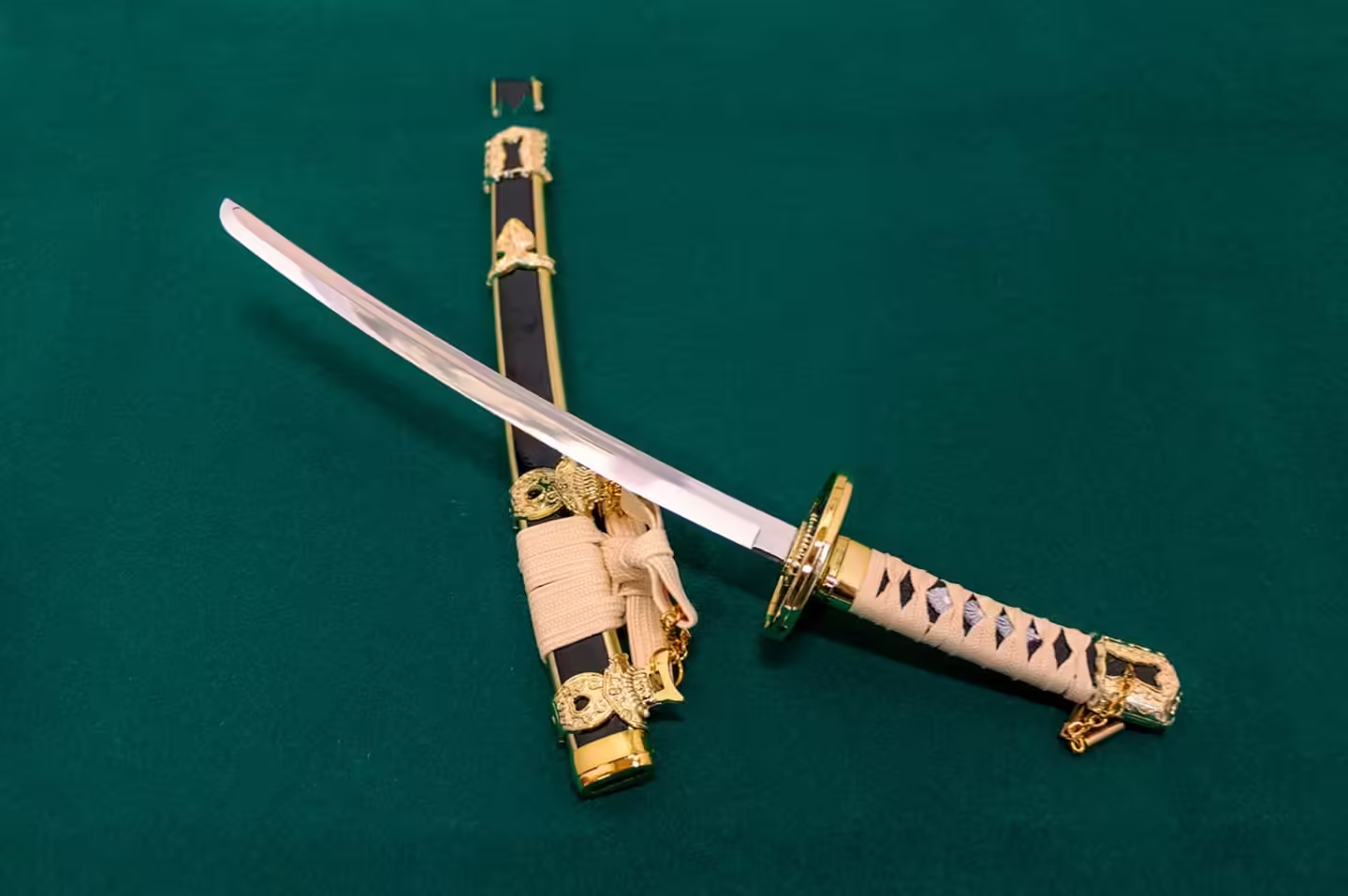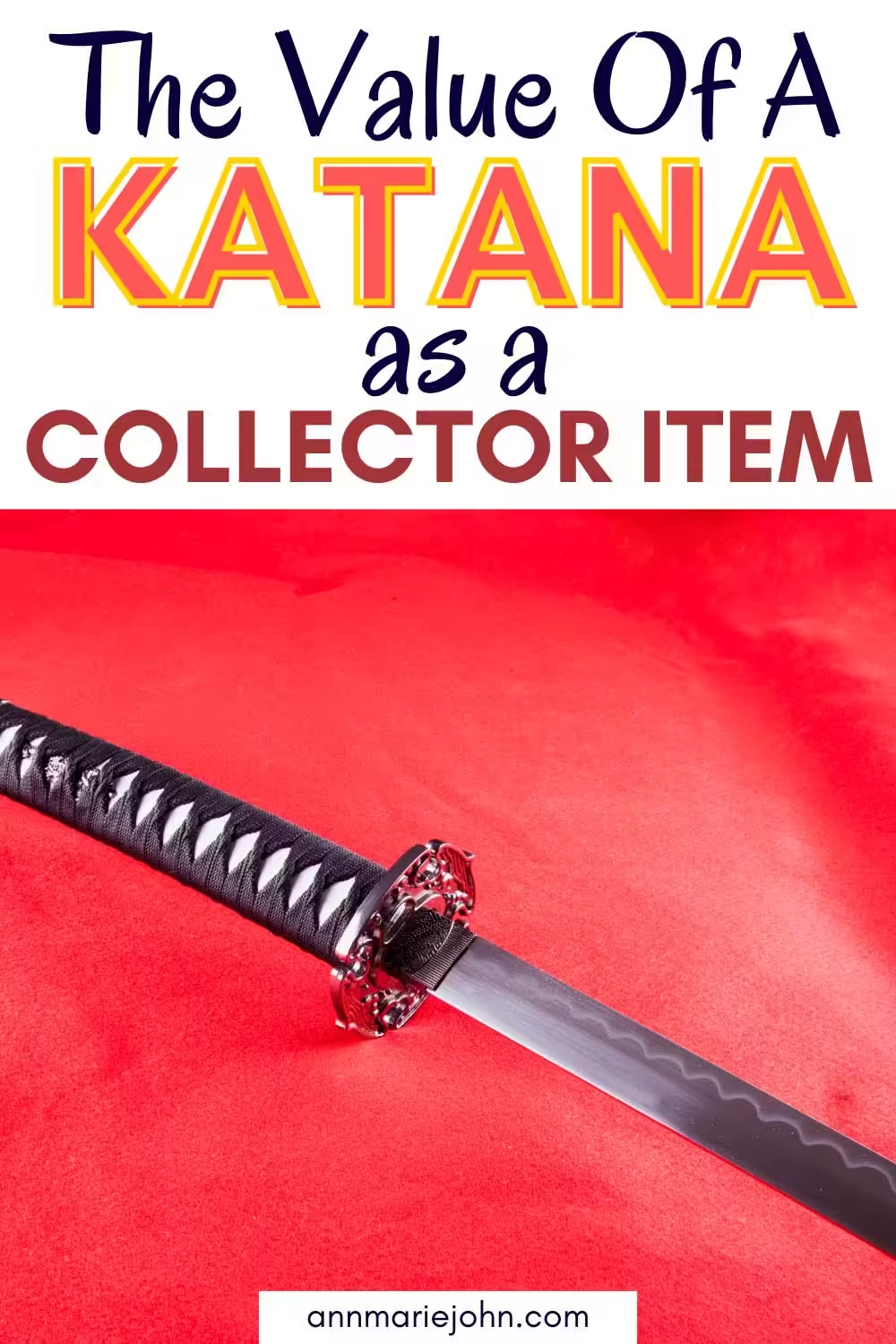Uncover the value of antique katanas as historical artifacts and collectibles. Learn about the factors that contribute to their monetary worth.

A katana is a curved, single-edged Japanese sword that has become an object of fascination and desire for collectors across the world. Characterized by its long, slightly arched blade with a circular or squared guard and long hilt, the katana served mainly as a lethal weapon in feudal Japan. Today, antique katanas are prized as high-value collectibles and historical artifacts in the international market.
The monetary worth of a katana depends on various aspects, from its physical attributes like age and condition to intangible factors like the fame of its maker. This comprehensive essay will provide an extensive evaluation of key considerations determining a katana’s valuation by collectors and current price ranges based on different criteria.

Physical Attributes Impacting Value
Several physical aspects pertaining directly to the sword itself play a role in deciding the base value of a katana. These include properties like age, state of preservation, and quality of craftsmanship.
Age of Katana
The precise age of a Japanese blade has a very significant bearing on its collector value. In general, the older a katana, the greater its worth due to its history and longevity. Based on major time periods in Japanese history, katanas can be classified into:
Kamakura Era (1185 AD – 1333 AD)
The Kamakura period marked the transition of Japan into a feudalistic society headed by a military class. Katanas produced in this era, when samurai culture and swordsmithing were still evolving, are considered antique pieces. As the oldest viable katanas in existence, 13th-century or earlier blades attract very high prices.
Muromachi Era (1338 AD – 1573 AD)
During the peaceful Muromachi period under shogunates, the samurai class consolidated power. Katanas from this time reflect improved forging techniques like differential hardening of the edge and back. High-quality 14th-15th century blades fetch premium values at auction.
Momoyama Era (1573 AD – 1603 AD)
The Momoyama age saw intense warfare ramping up katana production with mass-produced blades of lower workmanship. Well-preserved individual blades by skilled smiths still rate reasonably high on collector scales.
Shinto Era (1603 AD – 1867 AD)
This Edo period experienced a renaissance of katana forging arts, leading to more refined, durable blades. As Japan was largely closed off, swordmaking skills were perfected without outside influence. Shinto katanas are rated very highly for their artistic touches and innovative styles.
The above major era distinctions form a broad framework for dating and valuing katanas.
Condition of Blade
The physical state of preservation also determines how much a katana fetches from enthusiasts. Pristine condition escalate the investment value. Signs of wear negatively impact prices. Elements assessed are:
Structural Integrity
An undamaged, intact blade retaining its original shape and structure has maximum collector appeal. Cracks, chips, bends, or corrosion marks lower aesthetic quality and monetary value.
Rust Accumulation
Due to high-carbon steel composition, katana blades are prone to rusting. Minor oxidation may be acceptable but extensive red/ brown rust corrosion suggests neglect and drastically reduces market prices.
Sharpness of Edge
As a slicing weapon, the katana’s front edge must retain its keen sharpness. Nicks, dents or rounding due to improper use or long storage decreases functionality translating to lower collector ratings.
Hilt Condition
Wear and tear to the tsuka (hilt), saya (scabbard) tsuba (handguard) from use or mishandling also diminishes investment potential. The tang hole condition also receives scrutiny for holding the nakago (tang).
Alterations
Any alterations made to the original katana form including blade shortening, reshaping or retempering affects authenticity and collector value. Close inspection is done to check for alterations.
Restoration Work
Well-executed preservation work can enhance value but extensive polishing or remodeling may be seen negatively as changing the blade’s antiquity. Full disclosure on restoration methods prevents misunderstandings on the amount of original material left.
Thus, a katana kept in pristine, untouched condition with its various parts intact will understandably appreciate much more in the collectors’ market compared to damaged, weathered or altered blades.
Swordsmith & Craftsmanship
The skills and reputation of the katana maker also considerably sway valuation by enthusiasts. Works by eminent swordsmiths of the past who advanced the art attract high bids. Elements evaluated are:
Signature & Authentication
A signed tang stamp bearing the smith’s engraved name raises credibility and value. Supplementary authentication papers from an appraiser or previous owner help cement provenance.
Smith’s Standing
Blades forged by famous swordsmiths like Masamune, Muramasa, Kotetsu, Nobuie whose names are synonymous with the pinnacle of Japanese swordmaking, command very high valuation from collectors.
Distinctive Techniques
Special forging methods like mokume (wood grain pattern steel), higonokami (sparkle finish) and togiane (wavy tempered lines) making the blade more artistic and distinctive heighten value.
Period of Activity
Works by prolific smiths actively producing over different generations like the Honami, Nobuie and Sukesada clans accrue longstanding reputation-enhancing katana prices. Rarity of smith also matters.
Recognizing the level of artistry, personalized style and prominence of the katana maker either as a historical figure or contemporary craftsman is essential to fixing appropriate collector valuation. Top smith creations are accounted as national treasures in Japan’s cultural legacy and accorded premium pricing.
Intangible Aspects Impacting Value
Apart from physical traits of the sword itself, certain intangible factors linked to a katana’s past increase its romantic mystique for collectors. These include historical significance and accessories.
Historical Significance
Katanas bearing a traceable history tied to Japanese historical events, personages or noble families are more coveted by enthusiasts as ‘living antiques’. Possible connections include:
Use in Legendary Battles
Blades used by famous warlords in pivotal wars or campaigns have indelible historic value. For example, the sword Onimaru Kunitsuna used by samurai commander Takeda Shingen has iconic status.
Association With Legendary Warriors
Katanas owned by martial folk heroes or paragons like Miyamoto Musashi, Yagyu Jubei, Shinmen Takezo (fictional) have an aura attracting high bids from collectors.
Generational Family History
Heirloom blades handed down noble samurai clans over generations embody added history increasing collectibility. Documentation helps establish lineage over centuries.
Custom Commissioned Pieces
Having an old blade custom made for a Japanese feudal lord or high-ranking officer, engraved with family crests, boosts investment value.
Cultural Icon Status
Certain named blades like the Honjo Masamune and Hocho Masamune with mythical reputations command astronomical prices as cultural symbols of old Japan.
Historical katanas thus act as time portals allowing collectors to feel connected to the past eras and persona they represent, thereby multiplying intrinsic value.
Current Price Range in Collector Market
Antique Katanas (Over 100 years)
Based on all above parameters, most reasonably well-preserved antique Japanese swords with certificates date back at least a century or more. Their valuation span is:
- Average Price Range: $3,000 – $7,000
- Premium Quality Price Range: $15,000 – $50,000
- Museum-Grade & Named Blades: $100,000+ (Provenance adds premium)
Modern Katanas
These include:
- Production Katanas: Mass manufactured decorative blades for martial arts enthusiasts made from inferior metals with machine stamped blades range from $100 – $300.
- Custom-Forged Katanas: Contemporarily handmade by swordsmiths according to buyers’ preferences with options for personalized engravings and traditional techniques applied to modern tamahagane steel start from $3,000 onwards with no ceiling. Their value lies in being individually crafted to order.
In conclusion
The value of a katana as a collector’s item transcends its monetary worth, embodying centuries of cultural heritage, craftsmanship, and history. Each blade tells a unique story, reflecting the artistry and skill of its maker and the era in which it was forged. For collectors, a katana is not just an object, but a symbol of samurai honor, precision, and the enduring legacy of Japanese tradition. Whether sought for its historical significance, aesthetic beauty, or martial artistry, a katana holds an unparalleled allure that continues to captivate enthusiasts and collectors around the world.
